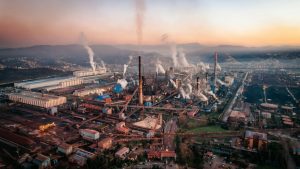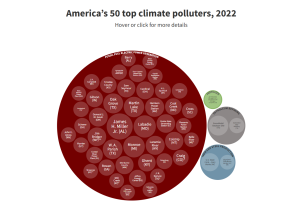From Contamination to Conservation: Verified Industrial Pollution Cleanup Success Stories
Industrial pollution has long been one of our most pressing environmental challenges. However, across the globe, forward-thinking companies and government agencies are proving that meaningful environmental remediation is not only possible but profitable. From PFAS-contaminated groundwater to transformed military bases, these success stories demonstrate how advanced bioremediation and pollution reduction technologies are creating cleaner communities and economic opportunities.
Manufacturing Facilities Leading the Charge
Western Digital Technologies: Silicon Valley Innovation in Pollution Prevention
Western Digital Technologies in Fremont, California earned EPA recognition in 2024 for demonstrating strong leadership in pollution prevention through comprehensive internal policies, supplier engagement, community involvement, and employee participation. Their approach showcases how high-tech manufacturing can embrace environmental responsibility without sacrificing productivity.
The company implemented stringent policies to minimize pollution by reducing emissions, conserving water, and minimizing waste. Their Environmental Management System adheres to International Organization for Standardization (ISO) 14001 standards, ensuring continuous improvement in environmental performance. Most impressively, they monitor and report greenhouse gas emissions with verified inventory data, setting a benchmark for transparency in the tech industry.
Belgian PFAS Groundwater Victory
One of the most significant contamination challenges facing modern industry is PFAS (per- and polyfluoroalkyl substances) pollution. A facility in Belgium achieved a remarkable breakthrough using SourceStop® technology, achieving over 99% reduction in PFAS concentrations in groundwater. This success demonstrates that even the most persistent “forever chemicals” can be effectively addressed with advanced bioremediation techniques.
W.R. Grace & Co.: From Chemical Contamination to Solar Power
The former W.R. Grace chemical manufacturing site in Acton, Massachusetts represents one of the most dramatic environmental transformations in recent history. After extensive remediation including groundwater extraction and treatment, soil excavation, and wetland restoration, the site now hosts a 5.6-megawatt solar array, contributing to renewable energy production while serving as a model for sustainable site reuse.
Airports and Military Installations: Security Meets Sustainability
Carswell Air Force Plant 4: Nature-Based Remediation
At the Carswell Air Force Plant 4 in Fort Worth, Texas, environmental engineers turned to nature for solutions. Eastern cottonwood trees (Populus deltoides) were strategically planted to remediate trichloroethene (TCE)-contaminated groundwater. These trees serve a dual purpose: controlling groundwater migration while enhancing in-situ reductive dechlorination of contaminants. This phytoremediation approach demonstrates how biological systems can provide cost-effective, long-term environmental solutions.
England Air Force Base: Military to Wildlife Sanctuary
Following comprehensive contamination cleanup, the former England Air Force Base in Louisiana underwent a remarkable transformation. The site now serves as part of the Audubon Trail, providing critical habitat for migratory birds while offering recreational opportunities for the surrounding community. This conversion illustrates how military environmental remediation can create lasting ecological and social benefits.
Golf Courses: Recreation Meets Restoration
Superfund Sites Transformed into Green Spaces
The EPA has documented multiple cases where remediated Superfund sites have been successfully repurposed into golf courses. These projects incorporate innovative on-site containment of contaminated materials with comprehensive post-construction monitoring to ensure ongoing safety. The transformation of contaminated industrial sites into recreational facilities represents a creative approach to both environmental cleanup and community development.
The Links at Spanish Bay: Pioneering Environmental Stewardship
The Links at Spanish Bay in California became the first golf course in the state to be certified under the Audubon Cooperative Sanctuary Program. This certification requires rigorous implementation of environmental stewardship practices, including pollution reduction and habitat conservation measures. The course serves as a model for how recreational facilities can operate in harmony with natural ecosystems.
Recent EPA Achievements and Ongoing Progress
EPA’s Superfund program continues to make significant progress, with recent accomplishments including the excavation of approximately 15,000 cubic yards of contaminated soil from former processing buildings and the injection of 11,000 gallons of treatment solutions into shallow groundwater wells. These concrete achievements demonstrate the ongoing commitment to environmental remediation across the United States.
As of June 6, 2024, there were 1,340 Superfund sites in the National Priorities List in the United States, with 457 sites having been successfully cleaned up and removed from the list. This track record shows that comprehensive environmental remediation is not only possible but achievable at scale.
The Economic Case for Environmental Remediation
Beyond the obvious environmental and health benefits, these cleanup efforts are driving significant economic growth. Remediated sites often become valuable real estate for development, solar installations, recreational facilities, and conservation areas. The transformation of contaminated land into productive assets creates jobs, increases property values, and stimulates local economies.
The success stories highlighted here represent just the tip of the iceberg. As bioremediation technologies continue to advance and environmental regulations become more stringent, we can expect to see even more innovative approaches to pollution cleanup. From PFAS-eating bacteria to AI-optimized phytoremediation systems, the future of environmental restoration looks increasingly promising.
Moving Forward: Lessons for Industry and Communities
These verified success stories offer several key takeaways for organizations facing environmental challenges:
Technology Integration: Combining traditional remediation methods with cutting-edge bioremediation technologies can achieve remarkable results, as demonstrated by the Belgian PFAS cleanup.
Long-term Vision: Projects like the W.R. Grace solar installation show how environmental remediation can align with broader sustainability goals and create lasting value.
Community Engagement: Successful cleanups often involve transforming contaminated sites into community assets, whether through recreational facilities, wildlife habitat, or renewable energy installations.
Regulatory Partnership: Working closely with EPA and other regulatory agencies ensures that cleanup efforts meet the highest standards while accessing available resources and expertise.
As we face mounting environmental challenges, these success stories provide both inspiration and practical roadmaps for creating a cleaner, more sustainable future. The combination of advanced technology, regulatory oversight, and creative reuse strategies demonstrates that even the most contaminated sites can be transformed into environmental and economic assets for their communities.
Sources: EPA Regional Pollution Prevention Recognition Program, EPA Superfund Success Stories, CLU-IN Technology Focus Areas, and verified EPA cleanup documentation.

In 2022, the 50 highest-emitting U.S. facilities released 471.8 million metric tons of greenhouse gases (GHGs, carbon dioxide-equivalent). Those 50 facilities were responsible for nearly 7% of the U.S.’s total GHG emissions in 2022.
We still have work to do… We created a free tool that shows you the biggest polluters near your home or work. Just put in your address and/or city, and a list of polluters with their contact information, a place to leave a review about their pollution and other contact information.
Who are the biggest polluters near me?

